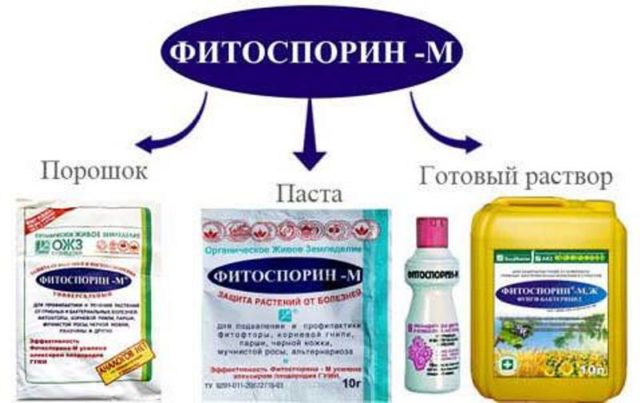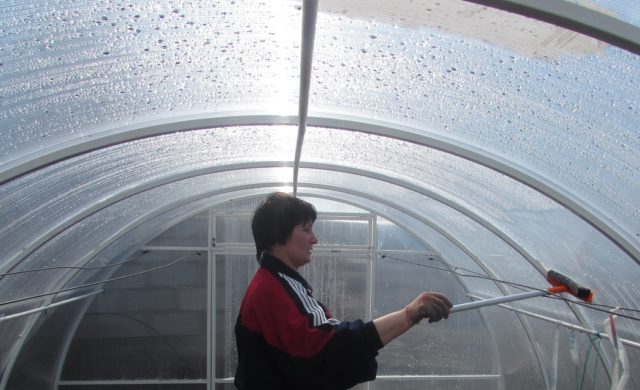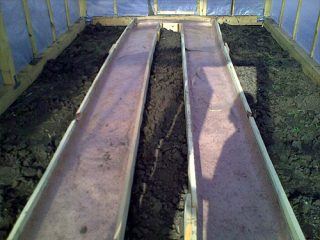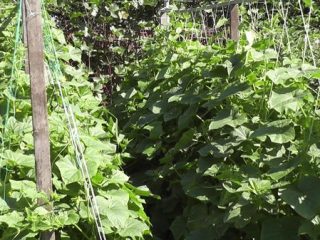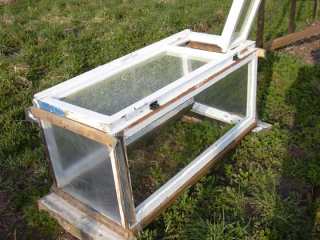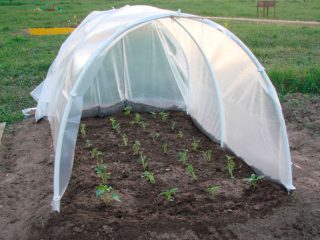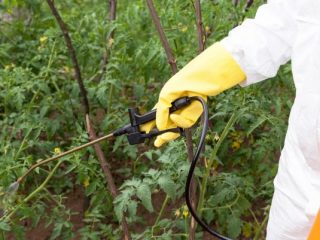Content
Early spring is the time to process the greenhouse to get ready for the new summer cottage season. There are several options for using a variety of drugs, but processing the greenhouse in spring with Fitosporin will protect the plants from the appearance of diseases and pests and grow a generous and healthy crop. When using the drug, you must adhere to the recommendations that are prescribed in the instructions, and observe safety measures.
Benefits of using Fitosporin in a greenhouse in spring
For processing polycarbonate greenhouses in spring, gardeners often use Fitosporin. Since the drug is universal, it protects plants from diseases and pests. It also improves soil structure and acts as an organic fertilizer.
Advantages and disadvantages of the drug
Fitosporin is a proven remedy for the control of larvae and pathogens that hibernate in the ground. Disinfecting the soil in your greenhouse will help you avoid serious problems and grow a healthy and generous crop.
Fitosporin is an aggressive biological product that contains the bacteria Bacillussubtilis. When they enter the ground, they begin to multiply rapidly, clearing the soil of larvae, microbes and spores. Beneficial microorganisms and soil structure do not suffer from this bacteria.
A biological fungicide has many positive functions:
- growth-regulating property;
- environmental friendliness, the drug is not harmful to the human body;
- ease of breeding;
- high efficiency against pathogenic microorganisms;
- increases productivity up to 25%;
- enriches the soil with useful microelements;
- compatibility with other fungicides;
- affordable price.
Despite the positive qualities, Fitosporin also has disadvantages:
- in order to protect plants from pests and pathogens, the first watering is carried out in the spring, followed by every month;
- if the plants are attacked by a disease, then it is pointless to use Fitosporin;
- powder solution should be applied immediately after preparation;
- the bacteria dies in direct sunlight.
When you can cultivate the land in the greenhouse with Fitosporin in the spring
Spring disinfection is carried out with the onset of warm days. The time depends on the weather conditions and the region of residence. As a rule, soil disinfection is carried out immediately after the snow melts, when the ground thaws a little.
In the central zone of Russia, they begin to prepare greenhouses for the summer cottage season in early April. In the south - at the beginning of March. In regions with a cold climate and late spring, preparatory work is carried out on May holidays.
How to dilute Fitosporin for greenhouse processing
Fitosporin for greenhouse disinfection is available in powder, paste and liquid form. To prepare a medicinal solution, you must strictly follow the instructions for dilution and use.
Dilution of Fitosporin to prepare the greenhouse for the summer cottage:
- Pasty Fitosporin is diluted with warm water in a ratio of 1: 2 and stirred thoroughly until the lumps disappear.If the entire working solution has not been used up, it can be stored at a temperature of + 15 ° C in a place where direct sunlight does not fall.
- Powder Fitosporin is diluted in this way: add 5 g of powder to a bucket of warm water. The prepared solution is used to wash the greenhouse frame and spill soil for planting. The prepared solution is used immediately, since the awakened bacteria quickly die.
- Liquid form used to clean the walls and roof of the greenhouse. To prepare a working solution, 50 drops of an aqueous suspension are diluted in 1 liter of warm water. The finished solution cannot be stored, so it is prepared immediately before use.
How to treat a greenhouse with Fitosporin in spring
Greenhouse disinfection with Fitosporin is carried out in spring and autumn. To do this, the prepared concentrate is diluted with warm, non-chlorinated water, grated laundry soap or any other detergent solution (shampoo, liquid soap, dishwashing detergent) is added. According to gardeners' reviews, it is effective to use shampoo for pets. For cleaning greenhouses, you can use a brush on the handle, a watering can will not work in this case.
The brush is abundantly moistened with a ready-made solution and the walls, roof, slats are thoroughly washed. You can also disinfect the frames for the beds, trying to pour the solution into the crevices and cracks. After disinfection, the greenhouse is not rinsed with water, as the condensate cleans the greenhouse on its own.
After washing the walls and roof, you can start to work on the soil. To do this, use a working solution of Fitosporin, prepared from powder or paste.
How to properly process a greenhouse in spring with Fitosporin can be found in the video:
How to treat the soil in a greenhouse with Fitosporin in spring
Fitosporin will help destroy pathogenic microbes and pest larvae that can hibernate in the soil. Also Fitosporin is often used for the prevention of fungal diseases, to improve the structure of the soil and as an additional organic feeding. Soil processing technology:
- Fitosporin is diluted strictly according to the instructions.
- Before watering, the concentrate is diluted with warm water at the rate of 1 tbsp. l. on a bucket of warm water.
- This volume is enough for processing 2 m² of soil.
- Sprinkle the spilled soil with dry earth and cover with foil or agrofibre.
- After 7 days, the shelter is removed and the soil is allowed to dry out.
- In a day, you can start planting.
Precautions
Fitosporin is a biological drug that destroys harmful bacteria and viruses, as well as pest larvae, but the drug is not terrible for beneficial microorganisms. It copes well with the causative agents of fusarium, phytosporosis, powdery mildew, black rot and anthracnose. For this reason, Fitosporin is widely used by gardeners.
When using Fitosporin, you must adhere to simple rules:
- Dilute strictly according to the instructions.
- The air and water temperature when diluting the drug should not exceed + 35 ° C. Since at elevated temperatures the bacteria will die.
- To awaken microorganisms, a concentrated solution is prepared 2 hours before use.
- Fitosporin should not be used if the air temperature is below + 15 ° C, since at low temperatures the bacteria hibernate.
- Do not dilute the drug in cold and chlorinated water.
- The dilution container must be clean and not previously used for dilution of chemicals.
When working with Fitosporin, precautions must be taken, despite the fact that the drug is not toxic to humans.In contact with the mucous membrane Fitosporin can cause slight redness, burning and itching. Therefore, you must adhere to the following:
- work with rubber gloves;
- during the processing of the greenhouse, it is better to work in a respirator;
- during processing, do not eat and smoke;
- in case of contact with Fitosporin on the skin or mucous membranes, it is necessary to immediately rinse the affected areas with warm water;
- if swallowed, rinse the stomach and drink activated charcoal;
- you can not dilute Fitosporin in dishes that are intended for cooking;
- after finishing work, wash your hands and face thoroughly with warm water and soap.
Fitosporin undiluted is stored at temperatures from -30 ° C to + 40 ° C. It is best to keep the powder and paste in a dry place, protected from babies and pets. Store the liquid suspension at room temperature in a dark place. Do not keep medicines, animal feed, food near Fitosporin.
Conclusion
Processing the greenhouse in spring with Fitosporin will help the gardener cope with many diseases, get rid of insect larvae that live in the soil, and make it possible to grow a generous, healthy crop. It is important to dilute the drug correctly, to cultivate the soil and frame of the greenhouse, and then pathogens and larvae will have no chance to attack the grown seedlings.
